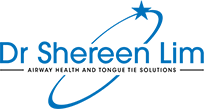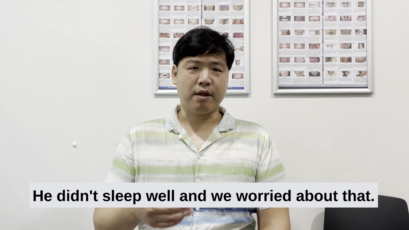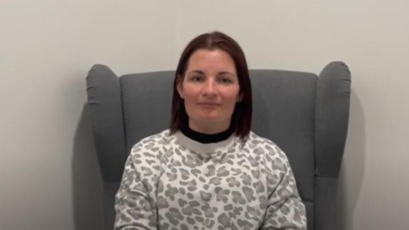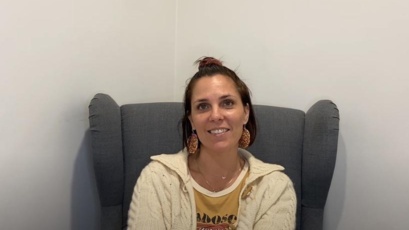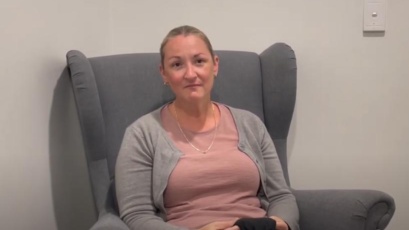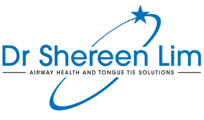Palate expansion for children
Palate widening at Sparkle involved the use of removable orthodontic appliances to widen the upper jaw in children whilst they are growing.
This intervention may be of benefit in the following situations:
- Dental crowding or crossbites
- High narrow palate/narrow nasal passage
- Allergies and chronic nasal congestion
- Persistent snoring including after removal of adenoids and tonsils
- Speech concerns and constricted tongue space
- Restoring more tongue space prior to myofunctional therapy and/or tongue tie release
Treatment may be suitable for children ages from the age of 3 years with breathing, sleep, and speech concerns and more severe orthodontic problems.
A personalized treatment plan to address your child’s concerns may also involve complementary treatments including ENT referral, allergy management, myofunctional therapy, tongue tie release and physical therapy.
Contact us to book an appointment to evaluate your child’s suitability for palate expansion.
FAQs
Palate expansion refers to widening the upper jaw or palate with orthodontic appliances.
This has traditionally been used in growing children to make more space for the permanent teeth to fit properly.
These days, as well as playing a role to encourage straight teeth, palate expansion can also be offered to promote nasal breathing.
This is because the palate also forms the floor of the nose. An increase in palate and nasal floor width have been associated with exponential increases in nasal airway and improvements in nasal airflow. The benefit of this is improved breathing, especially during sleep.
Palate expansion has been shown to improve snoring and obstructive sleep apnoea in children with narrow palates. This treatment can be a very important adjunct in combination with ENT surgery such as removal of adenoids and tonsils, to improve the nasal airway and sleep.
In children, palate expansion is a fairly simple process as the mid-palate suture that separates the two halves of the palate is not yet fused. When an expansion force is applied to gently separate the halves of the palate, it stimulates new bone formation at the suture or region of the bony nasal floor.
The force is applied via either a fixed or removable expansion orthodontic device. This device contains a screw mechanism which parents can turn on a regular basis to widen the palate.
In general, young children adapt well to the palate expansion process.
Dr Lim and her team let them know that having a new plate is like a new pair of shoes. They may not immediately be able to run a cross country in it. They may have to wear them in.
Children are variable and it is common for children to eat softer foods, or eat slow, and have a change in their speech for the first few days. By the end of the first week, it most often becomes like a second skin, and most children will think it feels strange when they take it out of their mouth to brush their teeth.
The adjustments themselves are generally not perceptible to children in the way that adjustments with braces can be.
The traditional age for orthodontic palate expansion is between ages 7 to 8 years, when the first permanent teeth are starting to erupt.
This can offer a bit more predictability in determining how much treatment is required for all the permanent teeth to fit.
At Sparkle Dental, our primary reason for palate expansion is for functional concerns including helping children breathe and sleep better and making more space for the tongue to work properly for example during speech.
In cases when a child’s sleep, speech or learning is at stake, it does not make sense for many parents to watch and wait whilst problems get worse.
As long as parents understand that treatment times and costs may be extended, and there is still no guarantee that braces will not be required, we will offer expansion for children to address functional concerns as early as age 3-4 years.
Palate expansion can offer the same functional benefits for adults.
In the past, these were not possible to achieve due to fusion of the mid palate suture that starts occurring around the age of 9 years. Expansion forces tended to move the teeth wider, rather than separate the suture to stimulate new bone formation in the mid-palate or nasal floor.
There are now new protocols that make palate expansion a predictable and highly targeted option to improve nasal breathing and reduce obstructive sleep apnoea in patients with narrow high arch palate.
The most well supported adult palate expansion protocol to improve nasal breathing and reduce obstructive sleep apnoea is called Distraction Osteogenesis Maxillary Expansion (DOME).
For some people, more traditional methods of palate expansion include Surgically Assisted Rapid Maxillary Expansion (SARME). This can be helpful to improve tongue space.
However, the most predictable options to improve nasal breathing outcomes will include the use of mini-implants and minimally invasive surgery.
Adult palate expansion is not offered within our practice.
Dental crowding is a sign that the jaw is not growing properly.
It can make sense to develop the palate while a child is still growing. This can help to make more room for the teeth to fit and minimise the risk of requiring extractions to alleviate dental crowding.
More importantly, palate expansion will widen the nasal floor to optimise breathing, restore tongue space and help broaden the smile.
The stability of results is another important consideration to avoid the return of overcrowding.
Myofunctional therapy to address the oral and facial muscle imbalances such as mouth breathing, tongue ties, thumb-sucking and atypical swallowing that contributed to the poor jaw development is key to minimise relapse.
There are no guarantees that braces can be avoided altogether, although this is a secondary aim of treatment in many cases.
If the underlying jaw problem and the muscle imbalances that contributed to it are addressed, we can expect any treatment with braces is more likely to be limited to minor cosmetic alignment.
When a child’s palate structure is developed properly, they have more room to accommodate all their permanent teeth. They are more likely to avoid the traditional practice of removing healthy premolar teeth to alleviate dental crowding down the track.
Early treatment with palate expansion can help the adult teeth into less crowded positions. This may help to minimise the degree of tooth movements if braces are required, and this will allow more stable results and less reliance on retainers.
The time needed for palate expansion varies for each child.
Some straightforward cases can be complete within a couple of months. When the mouth is particularly constricted, palate expansion may take several months and with a pause, and a need for a further round at a later stage to be determined later. In these cases, improvements in functional outcomes (eg breathing, sleep and speech) can become apparent much earlier.
In every case, our aim is to complete expansion as quickly as possible. The next step is to remove the expander during the day, to retrain the tongue to rest and function more optimally.
This can depend on individual factors.
Dr Lim will tend to do expansion of narrow palates before a tongue tie release. This helps to restore more space for the tongue to rest and function properly. It means more effective myofunctional therapy can be done to prepare the tongue for more positive functional outcomes following tongue tie release.
The research has shown us that both options help to improve breathing and sleep, and most children will require palate expansion as well as removal of enlarged adenoids and tonsils for long term resolution.
It does not matter which order these procedures are performed in. If a child is snoring or experiencing fragmented and non-restorative sleep that is impacting their attention, learning and daytime function, it makes sense to address both risk factors.
If a child requires both ENT referral and palate expansion, we will quite often commence the expansion whilst the child is waiting for their ENT appointment.
In this way, if there are improvements in breathing and symptoms, a child may be able to avoid ENT surgery.
If a child has a narrow palate and nasal congestion related to chronic allergies, Dr Lim tends to be more proactive about palate expansion.
Some severe allergies that involve immune therapy may take months to address.
Palate expansion widens the nasal passages so that air can flow more readily through it. This can be more critical when there is a lot of inflammation and congestion.
The results are only stable to the degree that a more favourable balance of the muscles of the mouth and face can be achieved.
The key for stable results is to restore closed mouth nasal breathing, improve tongue to palate suction at rest and reduce the activity of the lips and cheeks at rest and during swallowing.
This is why Dr Lim always proposes myofunctional therapy and habit correction in conjunction with orthodontic treatment to address contributing root dysfunction.
The great news is that establishing new habits such as good tongue to palate suction and nasal breathing are helpful for optimal sleep too.
Dr Lim asks children to continue wearing their expander at night-time only until they can restore more normal muscle habits after expansion is complete.
This is also why retainers are often required for life following braces.
Gone are the old days of waiting for a trayful of impression material to set inside the mouth.
Dr Lim uses digital scanning. This uses a video camera that takes hundreds of pictures inside your child’s mouth to create a digital model.
It’s comfortable and can be paused and restarted if your child needs a break.
The scans make it possible for us to do this in children at a young age.
Expect that it may take a few days for your child to acclimatise to speaking with a new appliance in their mouth.
Many children present with speech concerns, and parents do not want to see their child go further backwards with a plate.
It is our experience that when some children have more room made inside the mouth for their tongue tie fit, their articulation becomes clearer despite the bulk of the appliance.
Dr Lim’s favoured palate expander is a removable expander called the Biobloc Stage 1 Expansion device. This expander is unique because it offers a lot of control of the alignment of the front teeth at the same time.
Removable expanders are also more hygienic because they can be removed for thorough tooth brushing and cleaning of the appliance. For this reason, Dr Lim does not offer fixed expanders.
Children should wear the palate expander 24/7 except for when they’re brushing their teeth. They are asked to keep it in their mouth at all times including during school and eating. This minimises the chances of accidental loss or damage.
Some children have oral fixations and a habit of taking their palate in and out of their mouth, which increases their risk of losing the device.
One option is to consider some initial myofunctional therapy to reduce these habits before proceeding with palate expansion.
If an orthodontist is suggesting watchfully waiting, it is probable that they are focusing on achieving straight teeth in the most efficient time possible to avoid burnout.
Straight teeth are a secondary factor during the management of functional problems.
Our primary goal of jaw development is to remodel the nasal floor and improve tongue space, and optimise airway and sleep for life while a child is growing.
Rather than straight teeth, the outcomes should be along the lines of reduced bedwetting, reduced teeth grinding, less awakenings from sleep, more refreshed on waking, greater attention, less hyperactivity and improved speech.
Parents cannot always afford to wait until the child is aged 12 when dental problems develop, nor is it rational to wait until that time, when 90% of their jaw development is complete.
These papers provide a good overview of many studies in support of this approach.
- The role of rapid maxillary expansion in the promotion of oral and general health:
- The role of pediatric maxillary expansion on nasal breathing. A systematic review and metanalysis:
- Rapid maxillary expansion for pediatric obstructive sleep apnea: A systematic review and meta-analysis:
- Effect of rapid maxillary expansion on sleep apnea-hypopnea syndrome in growing patients. A meta-analysis:
- View case studies previously posted on Facebook here:
Disclaimer:
Dr Shereen Lim is a general dentist with a special interest in airway health and early interceptive treatment or poor jaw development. All orthodontic treatment carries risks, and individual results may vary. Before commencing any orthodontic treatment, seek consultation with a specialist orthodontist for a second opinion.
Patient Journeys
Palate expansion for children
Palate expansion at Sparkle is about promoting good jaw development for better breathing, sleep, speech, and facial balance. Hear what parents of our patients have to say here.
Palate expansion for 8-year-old with chronic nasal obstruction
4.5 years old-Breathing problems after Removal of Adenoids and Tonsils
